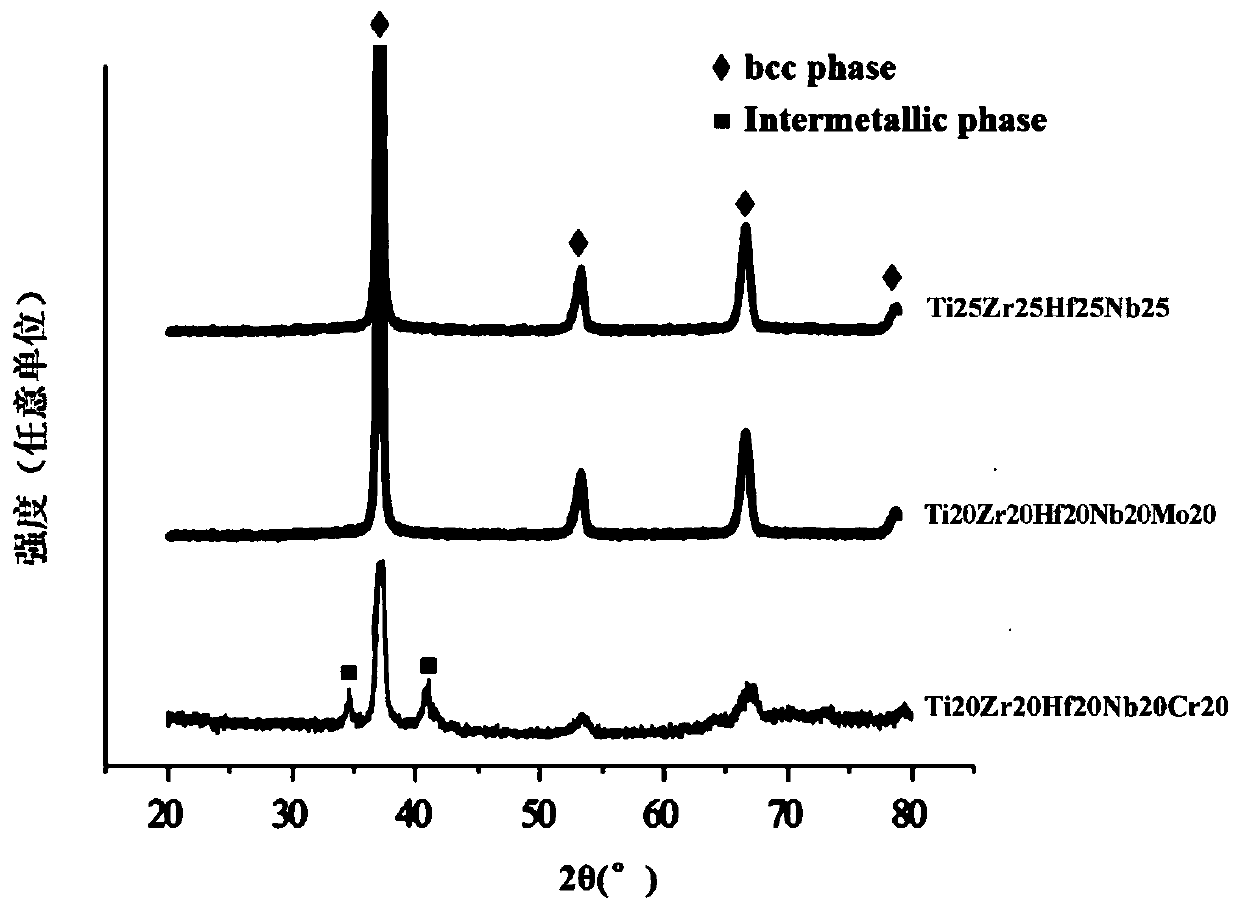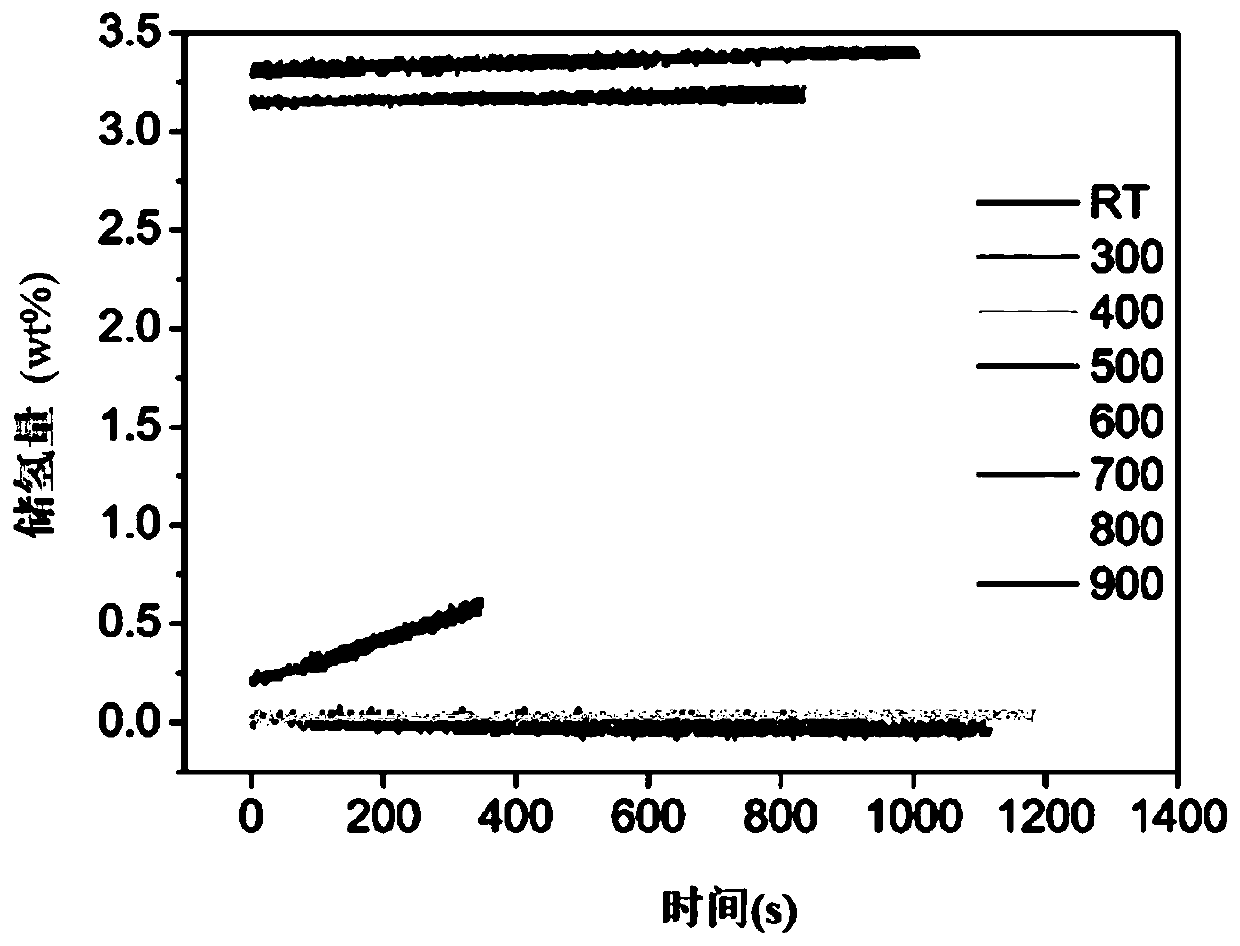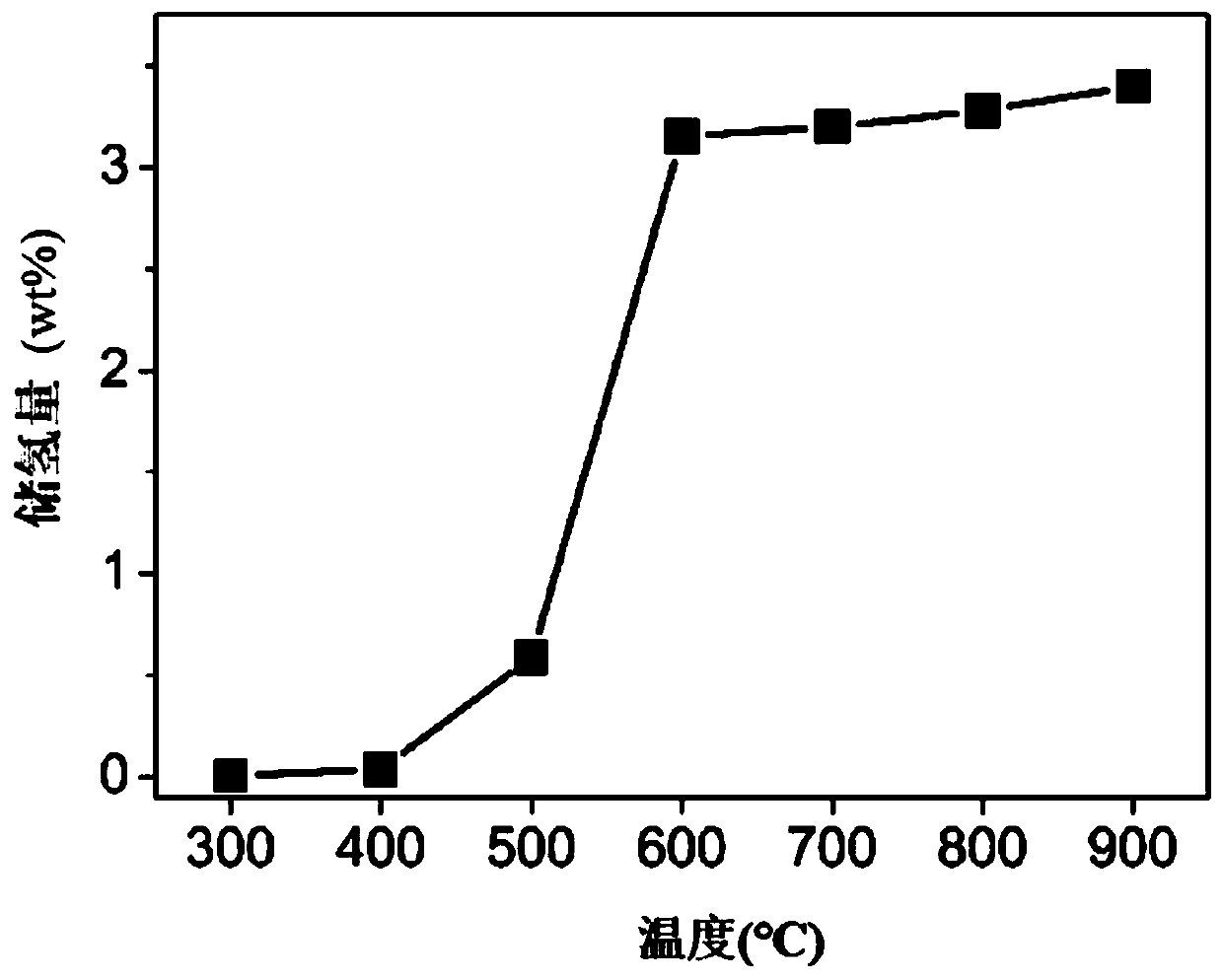A hydrogen storage high-entropy alloy based on a body-centered cubic structure and its preparation method
A high-entropy alloy, body-centered cubic technology, applied in the field of hydrogen storage high-entropy alloy materials, can solve the problems of poor activation performance, low cost, and small hydrogen absorption and desorption, and achieve broad application prospects and cost-saving effects
- Summary
- Abstract
- Description
- Claims
- Application Information
AI Technical Summary
Problems solved by technology
Method used
Image
Examples
Embodiment 1
[0027] Alloy melting involves the following steps:
[0028] Step 1: The atomic percentage of the design composition is Ti 25 Zr 25 f 25 Nb 25 , convert the determined atomic percentage of raw materials into mass percentage;
[0029] Step 2: Use a grinding wheel to remove the oxide scale on the surface of Ti, Zr, Hf and Nb respectively, cut the scale-removed raw materials into small pieces with a size not exceeding 10 mm, and weigh them with a balance (with an accuracy of 0.001 g) Proportion;
[0030] Step 3: Put the raw materials into the vacuum non-consumable vacuum electric arc furnace respectively, turn on the arc, first burn the upper layer of raw materials with a current of 150 A for 10 s, then increase the current to 350 A within 20 s, and keep it under this current for 10 s s, the upper and lower layer elements are melted together to form an alloy ingot; the alloy ingot is leaned against the wall of the water-cooled copper crucible in 4 times, and the angle with th...
Embodiment 2
[0035] Alloy melting involves the following steps:
[0036] Step 1: The atomic percentage of the design composition is Ti 20 Zr 20 f 20 Nb 20 Mo 20 , convert the determined atomic percentage of raw materials into mass percentage;
[0037] Step 2: Use a grinding wheel to remove the oxide skin on the surface of Ti, Zr, Hf, Nb and Mo respectively, cut the raw material from which the oxide skin has been removed into small pieces of no more than 10 mm, and weigh the ratio with a balance;
[0038] Step 3: Put a group of Ti and Mo, and a group of Zr, Hf and Nb respectively into the vacuum non-consumable vacuum electric arc furnace, and lean against the wall of the water-cooled copper crucible at an angle of 30° with the horizontal plane, and turn on the arc. First burn the upper layer of raw materials with a current of 180 A for 10 seconds, then increase the current to 400 A within 20 seconds, keep it under this current for 10 seconds, and repeatedly smelt 4 times to obtain two ...
Embodiment 3
[0042] Alloy melting involves the following steps:
[0043] Step 1: The atomic percentage of the design composition is Ti 20 Zr 20 f 20 Nb 20 Cr 20 , convert the determined atomic percentage of raw materials into mass percentage;
[0044] Step 2: Remove the oxide scale on the surface of Ti, Zr, Hf, Nb and Cr respectively, cut the scale-removed raw material into small pieces of no more than 10 mm, and weigh the ratio with a balance;
[0045] Step 3: Put the raw materials into the vacuum non-consumable vacuum electric arc furnace respectively. Since Cr is easy to volatilize, it is best to put it in the middle of all raw materials. Turn on the arc, first burn the upper layer of raw materials with a current of 120 A for 10 s, and then within 20 s Add the current to 330A and keep it under this current for 10 s to melt the upper and lower layer elements together to form an alloy ingot; lean the alloy ingot against the wall of the water-cooled copper crucible in 4 times, and for...
PUM
| Property | Measurement | Unit |
|---|---|---|
| density | aaaaa | aaaaa |
Abstract
Description
Claims
Application Information
 Login to View More
Login to View More - R&D
- Intellectual Property
- Life Sciences
- Materials
- Tech Scout
- Unparalleled Data Quality
- Higher Quality Content
- 60% Fewer Hallucinations
Browse by: Latest US Patents, China's latest patents, Technical Efficacy Thesaurus, Application Domain, Technology Topic, Popular Technical Reports.
© 2025 PatSnap. All rights reserved.Legal|Privacy policy|Modern Slavery Act Transparency Statement|Sitemap|About US| Contact US: help@patsnap.com



